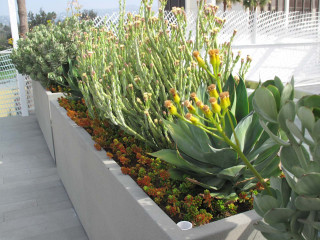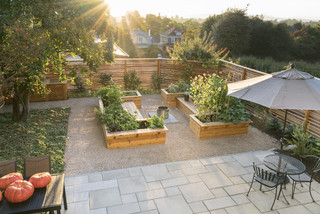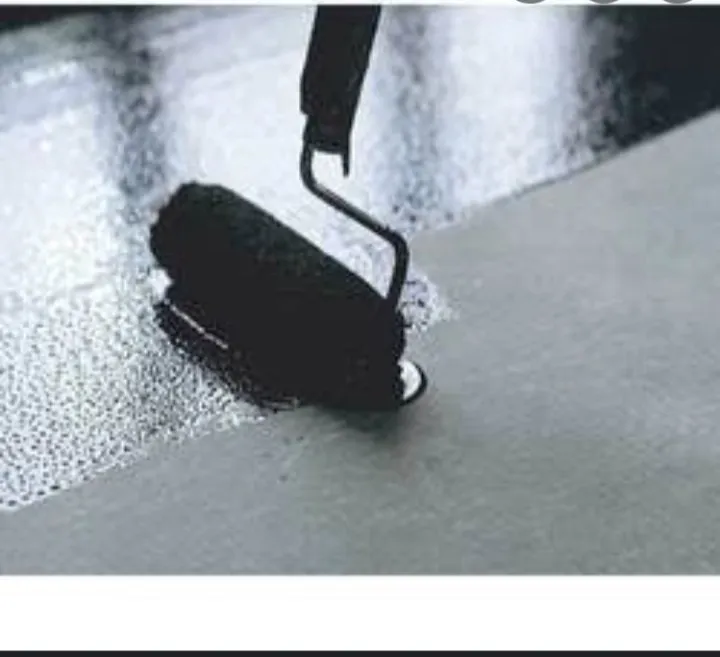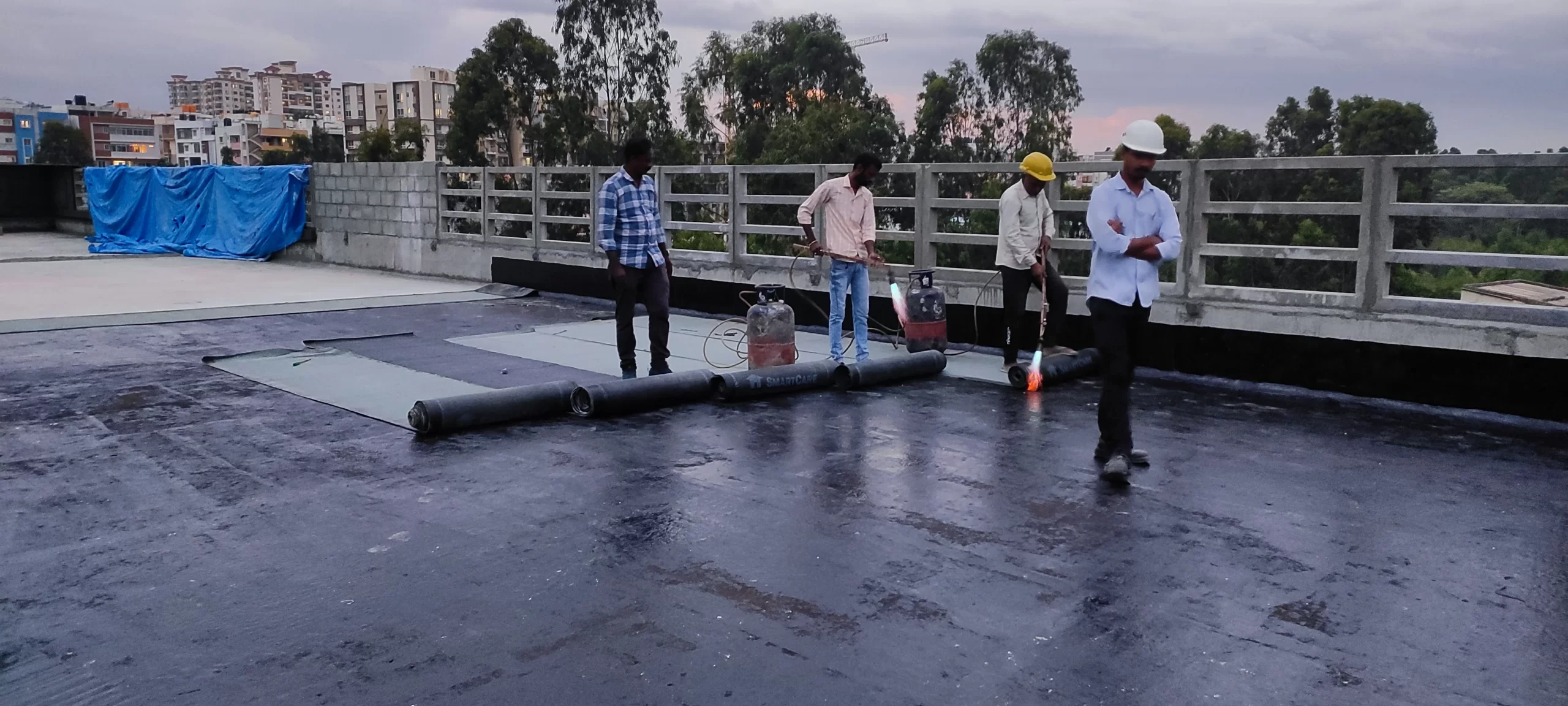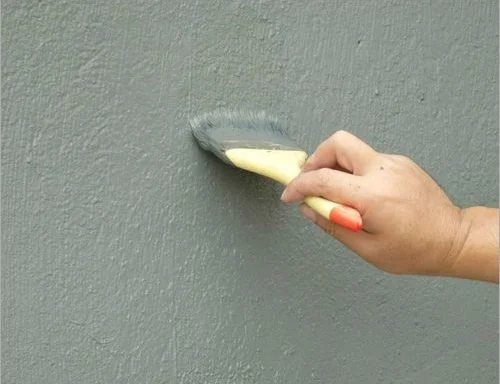The Ultimate Guide to Planter Box Waterproofing: Why It Matters and How to Choose the Right Service
Introduction:
When it comes to maintaining the beauty and health of your plants, planter boxes are a popular choice for both professional landscapers and homeowners alike. But even the most well-designed and aesthetically pleasing planter boxes are susceptible to water damage if not properly waterproofed. In this comprehensive guide, we’ll dive into the importance of planter box waterproofing, explore the different methods and materials, and help you choose the right service to meet your needs.
Table of Contents
The Importance of Planter Box Waterproofing:
Preventing water damage and rot
- Protecting against water damage: lanter box waterproofing is essential in preventing water damage that can occur when planter box materials absorb excess water or are constantly exposed to moisture. Over time, this can weaken the structure of the planter box and cause it to deteriorate. Waterproofing creates a barrier between the planter box material and water, preventing absorption and subsequent damage. By repelling water, waterproofing treatments can significantly extend the lifespan of your planter boxes and save you money on repairs or replacements.
- Preventing rot: Wooden planter boxes, in particular, are prone to rot when exposed to excess moisture. Rot occurs as a result of fungal growth, which breaks down the wood fibers and causes it to decay. Waterproofing wooden planter boxes is essential for preventing rot, as it helps to keep the moisture levels in check. Waterproof coatings or treatments can block water penetration, ensuring the wood remains dry and structurally sound. This, in turn, prevents the growth of rot-causing fungi and helps maintain the structural integrity of the planter box.
- Combating mold: Mold can develop on planter box materials when there is consistent exposure to moisture, inadequate drainage, or poor air circulation. In addition to being unsightly, mold can cause damage to the planter box materials and create an unhealthy environment for your plants. Planter box waterproofing helps to prevent mold growth by sealing the planter box materials, making it more difficult for moisture to accumulate on their surfaces. With a waterproof barrier in place, your planter box will stay drier, reducing the likelihood of mold growth and keeping your plants healthy.
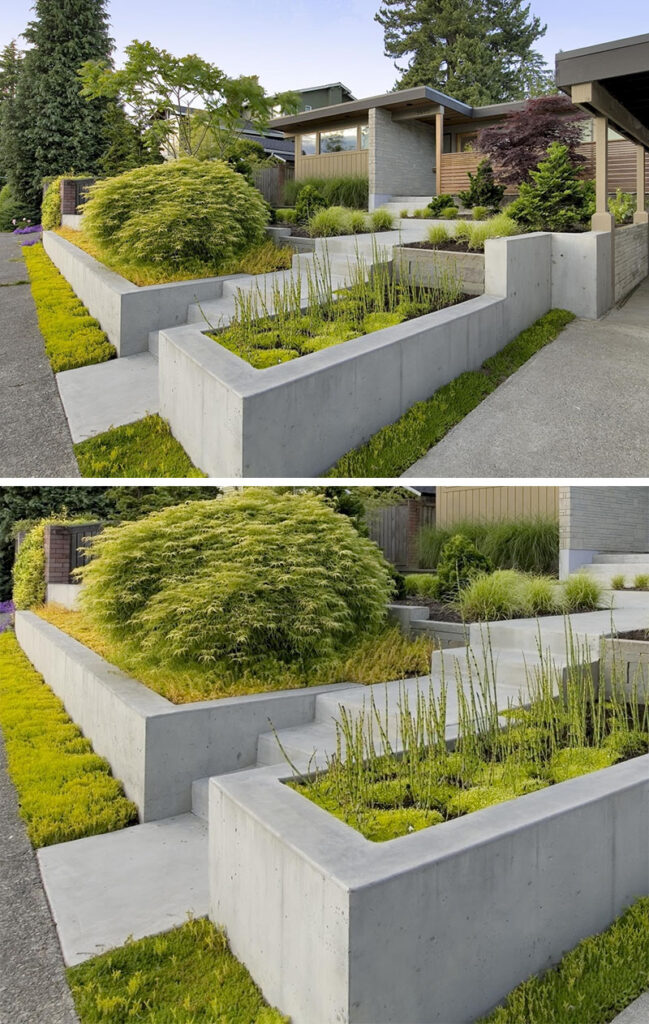
Failure to implement planter box waterproofing can have a significant impact on its durability and longevity, potentially leading to costly repairs or even the need for complete replacement. When a planter box is not properly protected from water and moisture, several issues can arise, causing damage to both the planter box and the plants within it. By understanding the importance of waterproofing and taking the necessary steps to safeguard your planter boxes, you can ensure a long-lasting, healthy environment for your plants while minimizing the risk of costly damage.
- Structural damage: When planter box materials are exposed to water and moisture without proper protection, they can become weakened and damaged. For instance, wood can swell, warp, or rot, while concrete can crack or develop efflorescence. Over time, this structural damage can compromise the integrity of the planter box, making it unsafe or unsuitable for use. In extreme cases, the planter box may become so damaged that it requires complete replacement. Repairs and replacements can be both time-consuming and expensive, making it more cost-effective to invest in planter box waterproofing upfront to ensure the longevity and durability of your planter boxes.
- Plant health issues: Inadequate planter box waterproofing can also lead to issues with plant health. Poor drainage and moisture management within the planter box can create an environment conducive to root rot, fungal growth, and other plant diseases. Addressing these plant health issues can be costly and time-consuming, particularly if they require the removal and replacement of the affected plants. By investing in proper waterproofing, you can maintain a healthy environment for your plants and avoid costly issues down the line.
- Aesthetic concerns: A planter box that has not been waterproofed may also suffer from aesthetic damage. Mold growth, rot, or water stains can detract from the appearance of the planter box, making it less visually appealing. Restoring the appearance of a damaged planter box can involve sanding, painting, sealing, or other labor-intensive processes, adding to the overall cost of maintenance. Planter box waterproofing not only protects the structural integrity of the planter but also preserves its aesthetic appeal, ensuring a beautiful and functional addition to your garden or outdoor space.
- Frequent maintenance: Without proper planter box waterproofing, planter boxes may require more frequent maintenance to address the issues caused by water damage. This can include regular inspections, repairs, and treatments to keep the planter box functional and visually appealing. The costs associated with this ongoing maintenance can quickly add up, making it more financially prudent to invest in proper waterproofing from the outset. By choosing effective waterproofing solutions, you can reduce the need for constant maintenance and save both time and money in the long run.
Ensuring Healthy Plant Growth:
Proper drainage, moisture control, and planter box waterproofing play a crucial role in promoting healthy plant growth. When the conditions within a planter box are carefully managed, plants can thrive, leading to lush foliage, strong root systems, and better overall health. In this article, we will discuss how proper drainage, moisture control, and waterproofing can contribute to healthy plant growth and prevent common issues like root rot, ensuring the longevity and vitality of your plants.
- Promoting healthy root growth: Plants need the right balance of air and water around their roots for optimal growth. Proper drainage within a planter box ensures that excess water can easily escape, preventing the soil from becoming waterlogged. When the soil is well-draining, oxygen can easily reach the plant’s roots, promoting strong, healthy root growth. Planter box waterproofing can contribute to proper drainage by preventing water from seeping into the planter box material, which can lead to water retention and slow drainage. By protecting the planter box from moisture intrusion, waterproofing helps maintain the ideal conditions for root growth, allowing plants to flourish and thrive in a healthy environment.
- Preventing root rot: Root rot is a common issue that occurs when plant roots are exposed to prolonged periods of excess moisture. The lack of oxygen in waterlogged soil can cause roots to suffocate and die, leading to decay and the potential for fungal infections. Proper drainage and moisture control within a planter box are essential for preventing root rot, as they help maintain the right balance of air and water around the plant’s roots. Planter box waterproofing plays a role in preventing root rot by ensuring that the planter box material does not absorb excess water, which could lead to inadequate drainage and waterlogged soil. By creating a barrier against moisture intrusion, waterproofing helps maintain the ideal environment for healthy plant roots and reduces the risk of root rot, allowing your plants to thrive.
- Maintaining the right moisture balance: Different plants have different moisture requirements, making it essential to maintain the right balance of water within the planter box. Planter box waterproofing can help achieve this balance by preventing the planter box material from absorbing or releasing water, which could impact the moisture levels within the soil. By ensuring that the planter box material is impervious to water, waterproofing contributes to a stable moisture environment, allowing plants to receive the ideal amount of water for their needs and promoting healthy, robust growth.
Different Waterproofing Methods and Materials:
Benefits:
- Ease of application: Liquid planter box waterproofing membranes can be easily applied to the surface of a planter box using a brush, roller, or spray equipment, allowing for quick and efficient coverage. This method helps save time and effort, making it a convenient choice for protecting your planter boxes from water damage and promoting healthy plant growth.

- Seamless protection: Once cured, liquid planter box waterproofing membranes form a continuous, seamless barrier, reducing the likelihood of leaks or breaches in the waterproofing layer. This feature provides long-lasting protection for your planter boxes, ensuring they remain structurally sound and preventing water damage that could impact your plants. The seamless barrier also helps to maintain the ideal moisture level within the planter box, contributing to healthy plant growth and reducing the risk of root rot or other plant health issues.
- Versatility: Liquid planter box waterproofing membranes can be used on a variety of planter box materials, including wood, concrete, and metal, making them a versatile choice for various applications. This flexibility allows you to protect all types of planter boxes from water damage, regardless of the material, ensuring that your plants remain healthy and your planter boxes remain structurally sound.
Drawbacks:
- Uneven coverage: The application of liquid planter box waterproofing membranes can sometimes result in uneven coverage, particularly on complex or irregular surfaces. This could lead to inadequate protection in some areas, potentially compromising the overall effectiveness of the waterproofing. To ensure proper coverage, it is important to carefully follow the manufacturer’s instructions and apply the liquid membrane evenly, using appropriate tools and techniques. Additionally, seeking professional assistance can help ensure that your planter boxes are properly and evenly waterproofed, providing optimal protection against water damage.
- Longer curing times: Liquid planter box waterproofing membranes often require a longer curing time compared to other waterproofing methods, which can delay the completion of a project or limit the use of the planter box until fully cured. It is important to follow the manufacturer’s instructions regarding curing time, which can vary depending on factors such as temperature and humidity. While the longer curing time may be a drawback, it is important to prioritize proper waterproofing to ensure the long-term health and functionality of your planter boxes. By allowing the liquid membrane to fully cure, you can ensure optimal protection against water damage, reducing the need for costly repairs or replacements in the future.
Advantages:
- Durability: Sheet planter box waterproofing membranes are typically made from durable materials such as rubber, PVC, or TPO, providing long-lasting protection against water and moisture intrusion. This durability ensures that your planter boxes remain structurally sound, preventing costly water damage and prolonging the lifespan of your planter boxes.
- Consistent Thickness: Sheet membranes offer a consistent thickness across the entire surface, ensuring uniform protection and reducing the risk of weak spots or leaks. This feature provides peace of mind, knowing that your planter boxes are fully protected against water intrusion.
- Resistance to Root Penetration: Some sheet membranes are specifically designed to resist root penetration, making them an ideal choice for planter box waterproofing. This feature helps prevent root intrusion, which can compromise the waterproofing layer and impact the structural integrity of the planter box. With sheet membranes, you can ensure optimal protection for your planter boxes and healthy plant growth.

Disadvantages:
- Professional Installation: Sheet planter box waterproofing membranes often require professional installation, as they need to be carefully adhered, seamed, or welded to ensure a watertight seal. This can increase the overall cost of the waterproofing project. However, professional installation can also ensure that the sheet membrane is properly applied, providing optimal protection for your planter boxes and preventing costly water damage.
- Limited Flexibility: Sheet membranes may not conform as easily to irregular surfaces or complex shapes, potentially limiting their effectiveness in some planter box applications. However, sheet membranes can still be a suitable choice for many planter box applications, providing durable and consistent waterproofing protection. It is important to consult with a professional waterproofing service to determine the best method of planter box waterproofing for your specific needs.
Benefits:
- Compatibility with Concrete: Cementitious waterproofing products are well-suited for use on concrete planter boxes, as they bond effectively with the concrete surface. This feature provides a durable and effective waterproofing solution for your concrete planter boxes, protecting them from water damage and promoting healthy plant growth.
- Easy Application: Cement-based waterproofing products can be applied using a brush, roller, or trowel, making them relatively simple to apply. This ease of application can save time and effort, allowing you to quickly and effectively protect your planter boxes from water intrusion.
- Resistance to Chemicals and Abrasion: Cementitious coatings are typically resistant to chemicals and abrasion, providing additional protection to the planter box surface. This feature ensures that your planter boxes remain structurally sound and visually appealing, reducing the need for costly repairs or replacements in the future. With cementitious waterproofing, you can ensure the long-term health and functionality of your planter boxes.

Limitations:
- Limited Flexibility: Cementitious waterproofing coatings can be rigid and may not provide the same level of flexibility as other waterproofing methods, potentially leading to cracks or failures in the waterproofing layer. It is important to properly assess the needs of your planter boxes and consult with a professional waterproofing service to determine the best waterproofing method for your specific application.
- Not Suitable for All Materials: Cementitious waterproofing products may not be compatible with all planter box materials, such as wood or metal. This limitation can make it important to consider the specific materials of your planter boxes before deciding on a waterproofing method. A professional waterproofing service can help determine the best waterproofing solution for your specific needs, ensuring optimal protection against water damage and promoting healthy plant growth.
Advantages:
- Strong Adhesion: Bituminous coatings adhere well to a variety of surfaces, providing a secure and long-lasting waterproofing solution. This feature ensures that your planter boxes remain protected from water intrusion, promoting healthy plant growth and prolonging the lifespan of your planter boxes.
- Resistance to Chemicals and UV Radiation: Bituminous coatings are typically resistant to chemicals and UV radiation, offering additional protection against environmental factors that can damage planter box materials. This resistance helps ensure that your planter boxes remain structurally sound and visually appealing, reducing the need for costly repairs or replacements. With bituminous coatings, you can enjoy peace of mind knowing that your planter boxes are protected against water damage and other environmental factors.
Drawbacks:
- Aesthetics: When it comes to planter box waterproofing, considering the aesthetics of your boxes is important. Bituminous coatings may not be the best choice for those looking for a visually appealing option, as they have a dark and shiny appearance. However, there are alternative waterproofing methods available that may better suit your aesthetic needs.
- Odor and VOCs: Another factor to consider when choosing a planter box waterproofing method is the potential for strong odors and VOCs. Bituminous coatings can produce these chemicals during application, making them less suitable for use in confined spaces or around sensitive plants. It is important to take proper safety precautions and use the appropriate equipment when applying these coatings to minimize any potential health risks.
- Temperature Sensitivity: Finally, temperature sensitivity is another factor to consider when selecting a waterproofing method for your planter boxes. Bituminous coatings may not be the best choice in areas with extreme temperature fluctuations, as they can lead to cracks or other failures in the waterproofing layer over time. Consulting with a professional waterproofing service can help you determine the best method for your specific needs and ensure long-lasting protection for your planter boxes.
n addition to considering the specific needs of your planter boxes, it is important to research and compare different waterproofing services. Look for providers with experience in planter box waterproofing and a proven track record of success. Reviewing customer testimonials and comparing quotes can help you find a reputable service that meets your needs and budget. Requesting a consultation with a professional waterproofing service can also provide valuable insight and personalized recommendations based on the specific needs of your planter boxes. With proper planter box waterproofing, you can protect your investment and ensure healthy plant growth for years to come.
Choosing the Right Waterproofing Service:
- Assessing your needs:
Once you have assessed your needs, the next step is to ask for recommendations. Reach out to friends, family, or online forums for recommendations on reputable waterproofing services. This can help you narrow down your options and ensure that you are working with a service that has a proven track record of success.
After gathering recommendations, it is important to research and compare services. Review customer testimonials, compare quotes, and ensure that the service provider has the necessary expertise and experience. Requesting a consultation can also be valuable, as it allows a professional to assess your planter boxes and provide personalized recommendations based on their findings.
Choosing the right waterproofing service is crucial for ensuring the longevity and durability of your planter boxes. By taking the time to assess your needs, gather recommendations, and research services, you can find a reliable and experienced waterproofing service that will help protect your planter boxes for years to come.
- Asking for recommendations:
Once you have a list of potential waterproofing services, it is important to research and compare them. Look for customer testimonials and reviews to get a sense of their reputation and level of customer satisfaction. Compare quotes and make sure that the service provider has experience working with your specific planter box material and environmental conditions.
Requesting a consultation with the service provider can also be valuable. This allows them to assess your planter boxes and provide personalized recommendations based on their findings. During the consultation, ask about their experience, the products and techniques they use, and their warranty or guarantee.
Choosing the right waterproofing service is essential for protecting your planter boxes from water damage, mold, and other issues. By gathering recommendations, researching and comparing services, and requesting a consultation, you can find a reliable and experienced service provider who will help ensure the longevity and durability of your planter boxes.
- Researching and comparing services:
Once you have a list of potential waterproofing services, it’s essential to do some research and compare them. Look for customer testimonials, ratings, and reviews to get a sense of the quality of work and customer satisfaction. It’s also a good idea to request quotes from multiple providers to compare prices and get a sense of the overall value of each service. Additionally, make sure to inquire about the provider’s expertise and experience in handling projects similar to yours. This will help ensure that you choose a service with the necessary knowledge and skills to address your specific waterproofing needs.
- Requesting a consultation:
Before committing to a specific waterproofing service, it’s valuable to request a consultation or site visit. During this meeting, a professional can assess your planter boxes, discuss your needs and concerns, and provide personalized recommendations based on their findings. This consultation will give you a chance to ask questions, address any concerns, and determine if the service provider is a good fit for your project.
Geoliz Waterproofers Pvt. Ltd. is a professional waterproofing service provider with the expertise and experience to help you protect your planter boxes from water damage, rot, and mold. They offer a range of waterproofing solutions tailored to your specific needs, ensuring the longevity of your planter boxes and the health of your plants.
Here’s how Geoliz Waterproofers can help with your planter box waterproofing project:
- Expertise and experience:
Geoliz Waterproofers has a team of skilled professionals who are well-versed in various waterproofing techniques and products. Their expertise in handling different planter box materials and their understanding of local climate conditions enables them to provide effective planter box waterproofing solutions for your unique needs.
- Comprehensive assessment and consultation:
Geoliz Waterproofers will conduct a thorough assessment of your planter boxes, taking into account factors such as the type of material, size of the project, and local climate. During the consultation, their experts will discuss your requirements, address any concerns, and provide personalized recommendations based on their findings.
- Customized waterproofing solutions:
Based on the assessment and consultation, Geoliz Waterproofers will develop a customized waterproofing plan tailored to your specific needs. They will select the most appropriate planter box waterproofing method and materials, such as liquid membranes, sheet membranes, cementitious coatings, or bituminous coatings, to provide optimal protection for your planter boxes.
- Professional installation:
Geoliz Waterproofers’ team of skilled technicians will ensure the proper installation of the chosen planter box waterproofing solution, adhering to industry best practices and manufacturer guidelines. This will guarantee a high-quality, long-lasting waterproofing barrier for your planter boxes.
- Ongoing support and maintenance:
Once your planter box waterproofing are done, Geoliz Waterproofers can also provide ongoing support and maintenance services to ensure the continued effectiveness of the waterproofing system. This may include regular inspections, repairs, or updates as needed, providing you with peace of mind and protecting your investment.
Conclusion:
Investing in planter box waterproofing is crucial for the longevity of your planter boxes and the health of your plants. By understanding the different waterproofing methods and materials and carefully selecting the right service, you can protect your investment and ensure that your plants thrive for years to come. Choose a reputable, experienced waterproofing service, and rest easy knowing that your planter boxes are well-protected against water damage.
GEOLIZ WATERPROOFERS PVT. LTD.
Waterproofing Products & Services Guide
For details on other waterproofing products & Services

